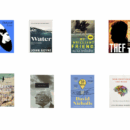#TwitterBigStick and #TwitterThumbsUp: where to from here?
The 2 hashtags, #TwitterBigStick and #TwitterThumbsUp were never intended to be finished products in any sense. As I have said from the outset, they were simply a demo of what focused tweeting can do. They play on very human needs: to express frustration when good service or value for money is not provided; and to record applause when an organization or individual excels. That is all.
They remain just hashtags, and never pretended to be anything else. They provide a start in getting Kenyans (and others in the Twitterverse) to express themselves and tag their ‘yays’ and ‘nays’ collectively. This has already had a good response from many organizations – and all credit to those who have embraced the feedback.
So where does it go from here? The tags were not meant to be products designed to be of use to corporates. They just gave ordinary people a chance to vent and collect their reactions to products, service and more general issues. I have stated repeatedly that personally I have no business model or profit-making motive here: none. It is for others to use the data and refine the idea as they see fit. Social media has no owners, and these are just tags.
Others have indeed expressed interest in continuing the work initiated. For example:
The Kenya Institute of Public Policy Research & Analysis (KIPPRA) is interested in the fact that most tweets tagged under #TwitterBigStick in Kenya seem to be focused on the societal problem of dangerous driving. They intend to download data and evaluate it to understand whether there are particular geographical areas, roads or even organizations most often cited for dangerous driving. This will help craft policy responses in future.
OverlapKE, a private initiative, is also interested in doing something similar: consolidating its own hashtag #overlapKE with #TwitterBigStick to study repeat offenders, serial overlappers etc, and publicize this material on their website, www.overlap.co.ke. Good wishes to them in this worthy endeavour.
Gotissuez wish to conduct something similar for corporates, helping them understand mentions and patterns pertaining to their brands, also consolidating with their own hashtag, #gotissuez.
Corporates in general will require richer data and more subtle insights regarding brand sentiment. Sentiment engines and the like will be deployed by specialists to generate deeper insights from social media metadata. Again, good wishes.
To conclude: customer connectivity is the real revolution. Customers are using cheap, widespread, mobile connectivity to take more power and have more say in the products and services provided to them. That is especially pertinent in Africa, where consumer power has been muted in the past. Whether this revolution uses Twitter, Facebook or any other platform, or one not even invented yet, is impossible to say. It is still early days, and the power shifts are still nascent.
All we can do is to make a start, and try small experiments. #TwitterBigStick and #TwitterThumbsUp were just such an experiment in drumbeating. I was extremely gratified by the usage of the tags in Kenya and beyond. They no doubt provide a place to voice collective satisfaction and dissatisfaction about value provided by organizations. But they are just a start. If you want to do more, whether for public good or private profit, it’s your call. Take the social consumer revolution to new heights using more refined products and ideas, more powerful platforms. Use your expertise to provide a greater impact. Join in the dance. The aim should be to give customers, consumers, users, voters, citizens a greater say in whatever affects their lives.

Buy Sunny Bindra's new book
The X in CX
here »
Popular Posts
- My books of the yearDecember 14, 2025
- Confessions of an explaining personDecember 7, 2025
- Here’s why you should become foolishNovember 30, 2025
- How to listen, really listenNovember 16, 2025
- Is AI hiring your company into oblivion?November 23, 2025















